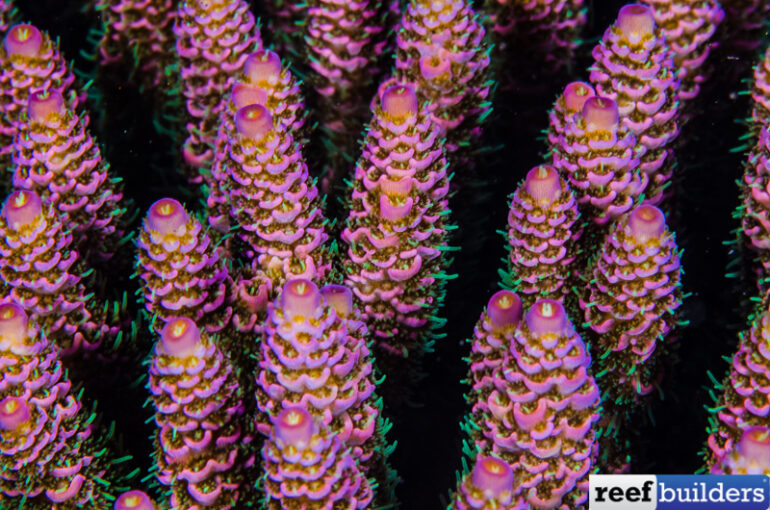It’s been over 20 years since I started culturing corals in the ocean and in dedicated aquariums. I always believed that the shape of a corals was mainly determined by trying to expose as much surface to light while withstanding the flow, the force of mother nature ocean swells.
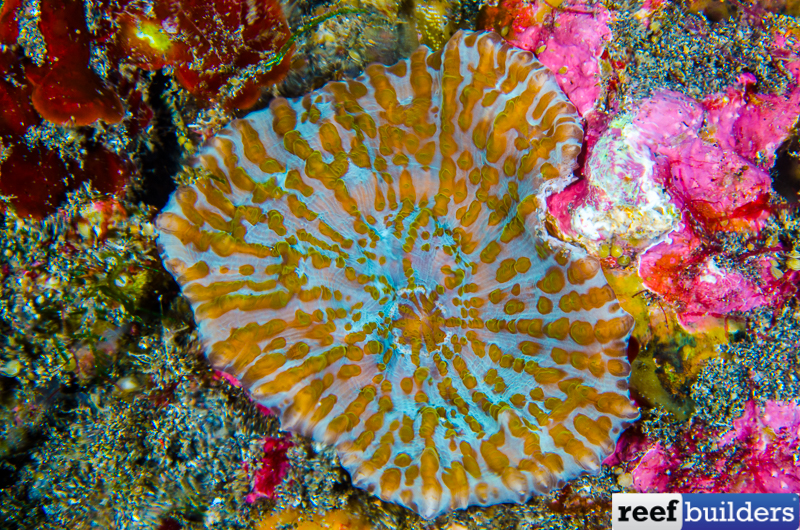
Even if this rule is true, it took me 20 years to understand that the shape of a coral is made to disrupt water flow, and get suspended food to slow down so the coral can actually catch it!

Corals are actually designed for specific need, nothing is left to chance, everything serves a purpose. Over 20 years trying to mariculture many different species of corals, I learnt that if a corals grows somewhere, there are reasons that it prefers this particular location, whether I understand it or not. But feeding corals in a closed (aquarium) system, I also learned that if a coral has particular shape, there is still a reason for it. And this reason, is more about feeding than trying to expose as much tissue as possible to light, or resisting flow.
The shape of an Acropora colony:
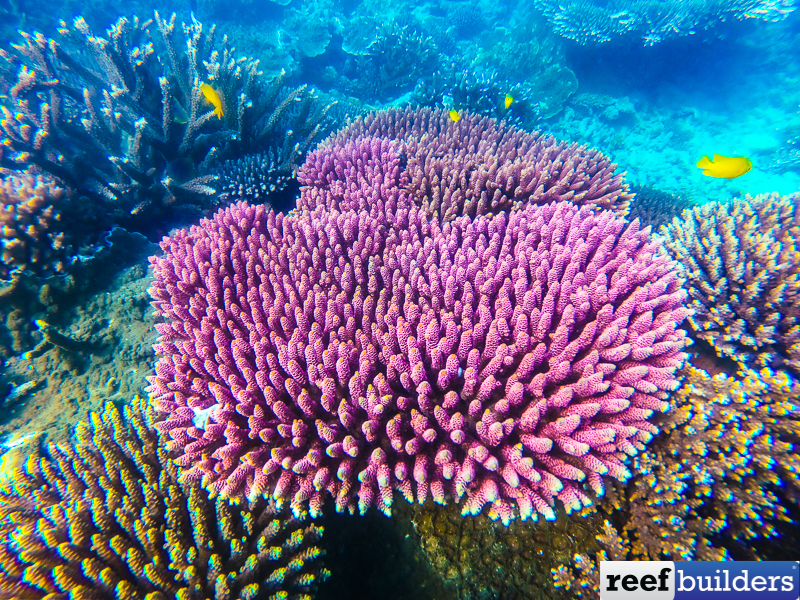
It was while observing Acropora millepora colonies on natural reefs, with their long tentacles in the center of the colony, when I understood that side branches exist to disrupt the flow, so nutritious food particle slow down and sink in the middle of the colony, where the tentacles can catch them.

One notable feature to notice about A. millepora and A. tenuis is their corymbose, or pillow shaped colonies, and that they usually live in very shallow water, often being almost dry during very low tide. As a diver we know that the first 2 feet (60cm) of seawater is where there is a high density of organic, food particles. So these two species of corals oftentimes bathe in this nutrient rich soup, and have adapted to strip particles out of it.

Another good example of coral form reflecting its feeding function is A. efflorescens, a unique saucer shaped SPS coral that likes to colonize high surge, high flow area. I always thought its very unique shape was to withstand this very high energy environment. But in fact it’s designed to create turbulences in the surge to decant food in its center. Food that will be ingested by polyps in the center of the colony.
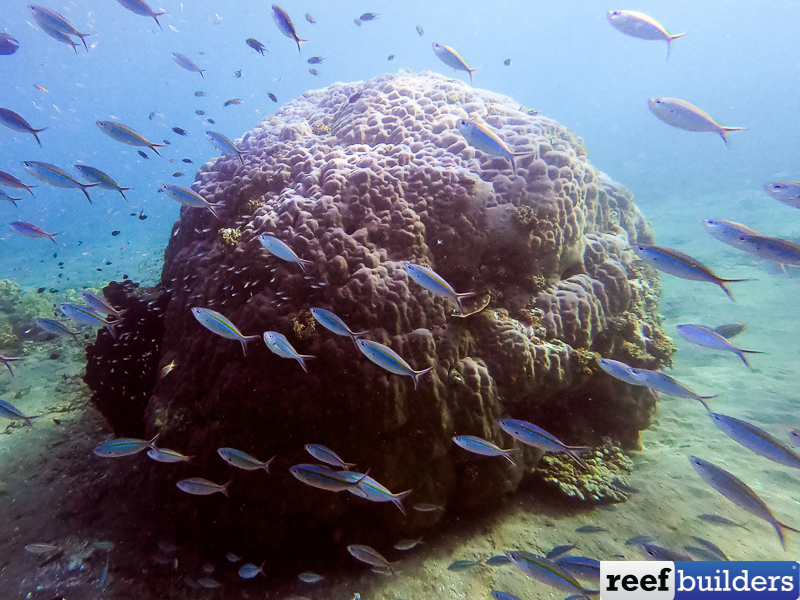
Some coral colonies grow in a certain spot on the reef, to create the turbulence. One side of the coral creates a back-eddy, while the other site of the coral feeds. This happens a lot with massive corals such as brain-corals, Lobophyllia sp, many Faviids, but also large massive Porites.
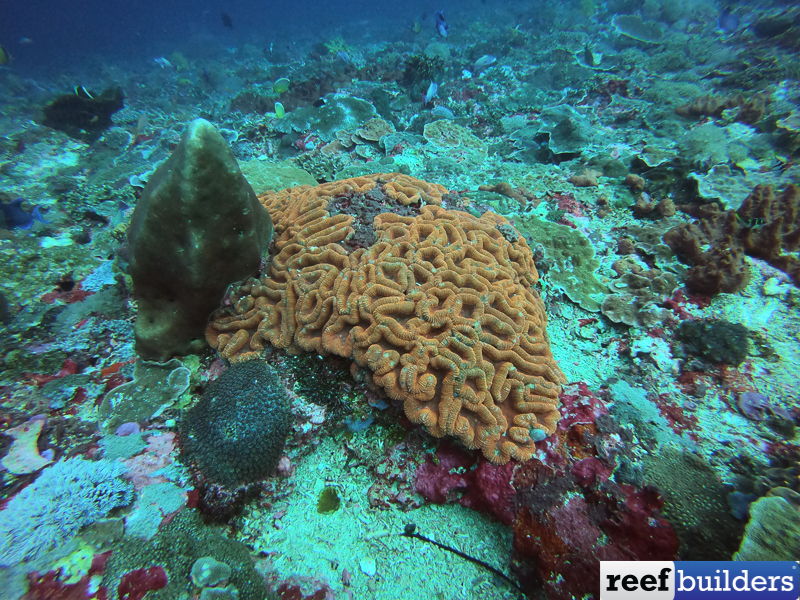
Some corals live in holes:
Other corals choose a different strategy, instead of creating the turbulences by growing a particular shape they will try to settle in a strategic point on the reef, where food naturally tends to collect. A particular example of this Echinophyllia orpheensis found in Australia, that choose small cracks on the reef to settle at the bottom of it. All the food that drop in the crevice ends up on them.
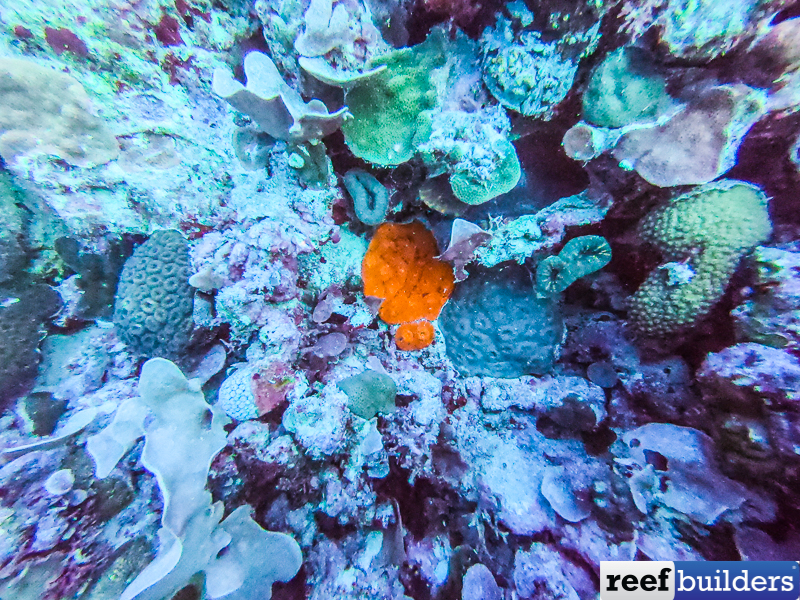
If you try to read the ocean floor, you can find depression on the floor that will collect food. If that depression, is in the right depth, in a ‘food channel’, you’ll probably find a lot of interesting stuff in this place, while the surrounding will be devoid of any life. This is the way I learnt to find fields of brain corals such as Trachyphyllia geoffroyi or Acanthophyllia deshaesyana. They only seem to live at higher densities in places that collects food.
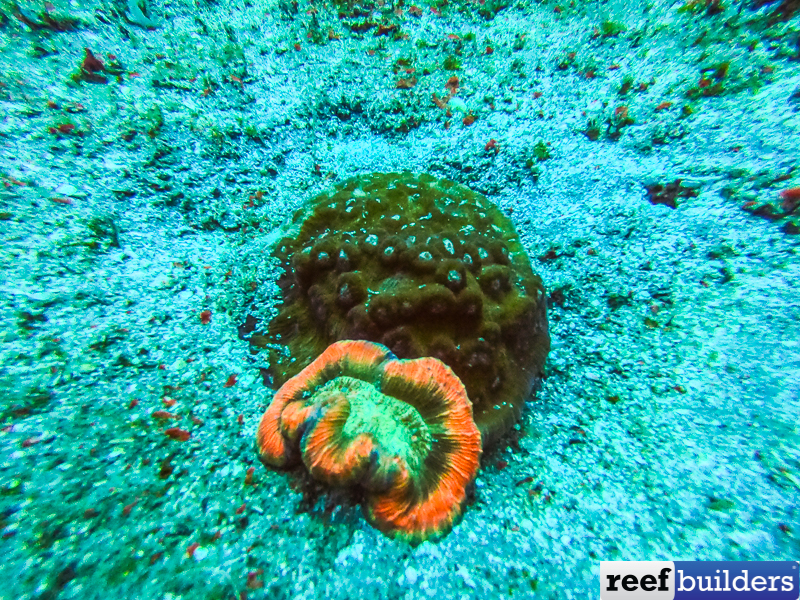
The shape of a polyp:
Then comes the shape of some of these corals. You would think the shape of a coral is due to random evolution. No it’s highly designed and selected for over 500 millions years, to reach perfection!
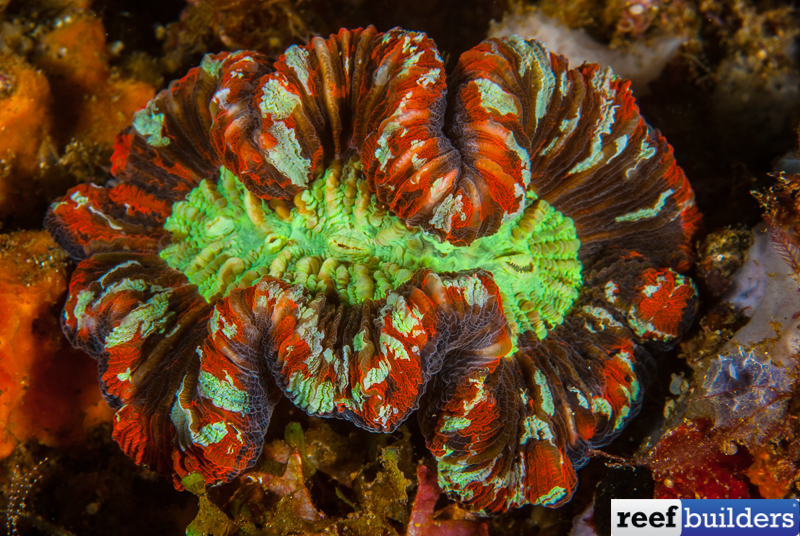
Why do corals have all these grooves, valleys, septa, etc.? It’s not random chance, it serves a purpose. Channels and grooves, break and slow down the flow to trap food particles. That would also explain why corals tend to inflate a lot more in aquarium, because there is not enough flow, and very little food to catch. So instead in the aquarium corals have to concentrate 100% of their energy into capturing light.
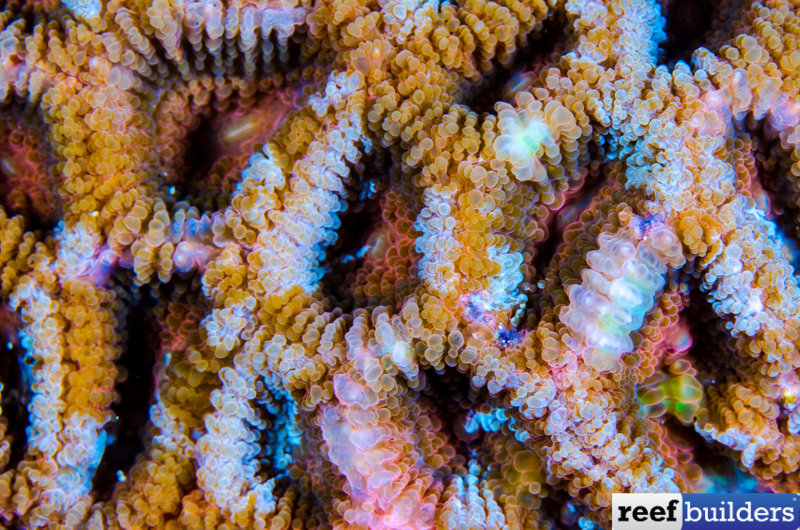
A tentacle trap:
Then you have the actual catching mechanism, which are the tentacles. These are designed to add another layer of disturbance into the flow. While the skeleton is rigid, tentacles are soft and just follow the disturbance to slow it even more. You just have to observe torch coral tentacles into the flow, and the way they actually channel, and slow down the flow, so they can extract food out of it.
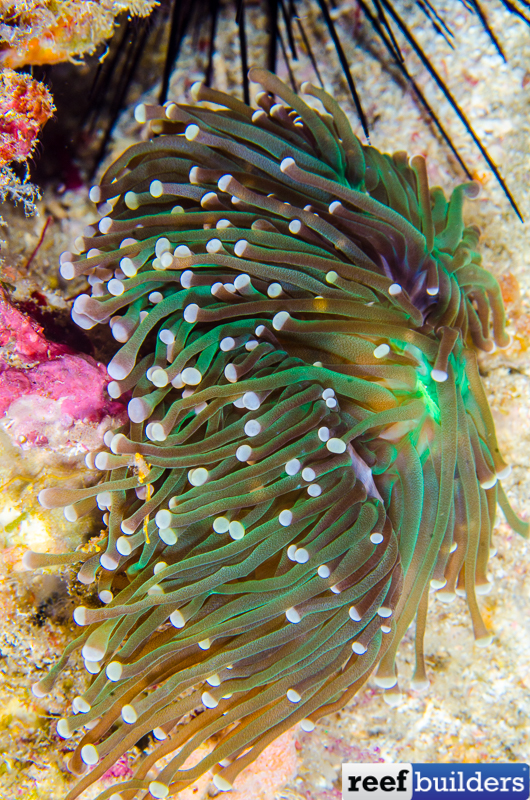
A polyp actually feeds inverted!:
Then there is this strange perception, that polyps are like carnivorous plants where they face the direction of flow, and catch food passing by, but this isn not exactly the way it works. Some sticky particles may be captured this way but by and large, coral polyps catch food downstream, giving their back to the flow, and catching food through the back of their tentacles. If polyps face the flow, the food arrives too fast and they can’t catch it, it’s only when it’s slowed down in the back of the corals, that the food is slow enough to catch it.
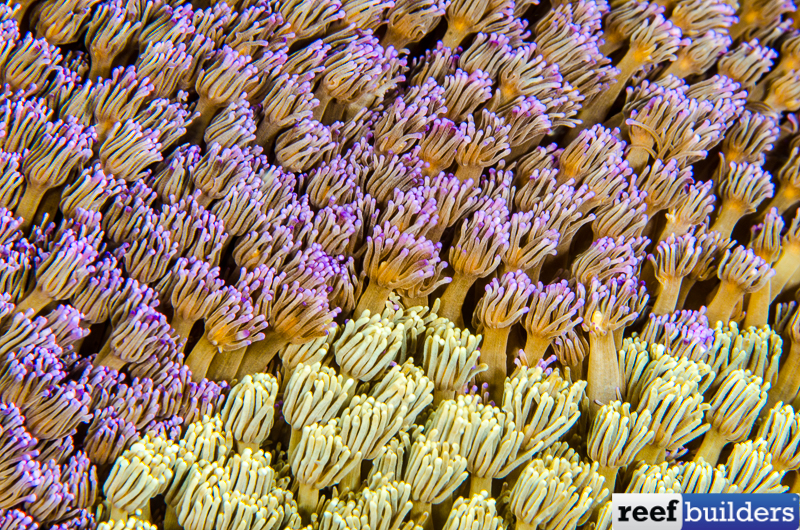
The food is caught from the back of the tentacles, and brought to the calm inside face, on the polyp’s mouth to be ingested. For an example of this you just need to check at Gorgonians, by observing their position and orientation, you know how the current on this particular location. Gorgonians grow perpendicular to the predominant water flow, curbed by the flow, with polyps on the inside of the flow.
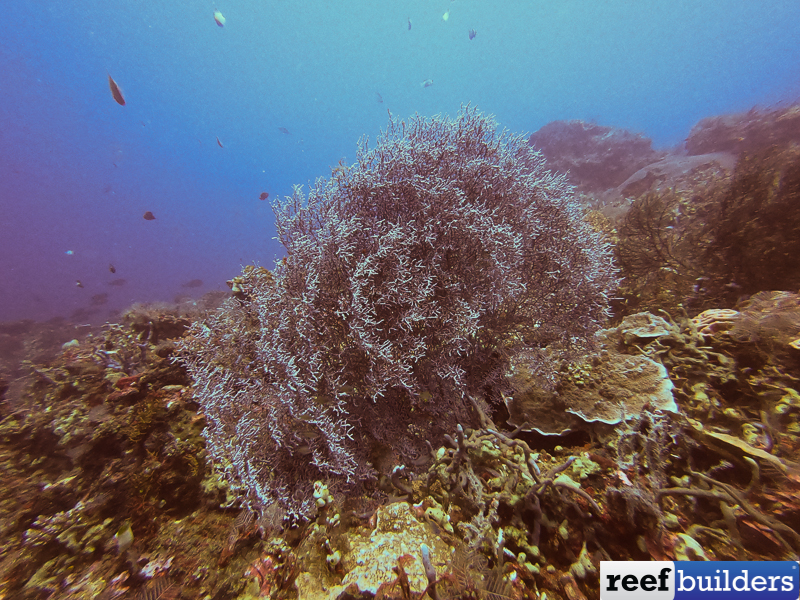
What does it mean for your aquarium?
It means first of all that if you want your corals to grab and ingest the food you give them, you better put your pumps in feeding mode. Then you need to think twice where you place your corals into your tank, into your flow. They shouldn’t face it, but give their back to it. Concentrate corals that need intense feeding in places that actually collects food.
But the main message, is that we’ve been told for many years that corals would receive 90% of their needs from zooxanthellae. And thus don’t really need feeding. The question, is, if they don’t really need feeding, why are they so well designed to feed?
I think the next advances in reefing, will be through feeding and the filtration system that can support it. It’s only through intense feeding that we will get corals such as many slow growing LPS to grow actually a lot faster, and even be produced in quantity enough to stop wild collection.


